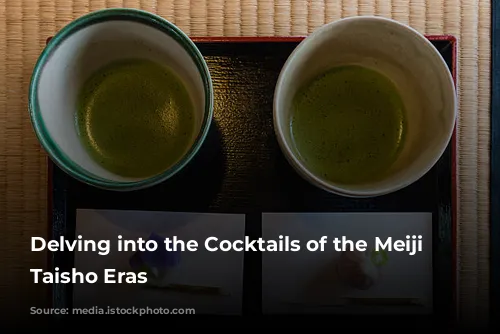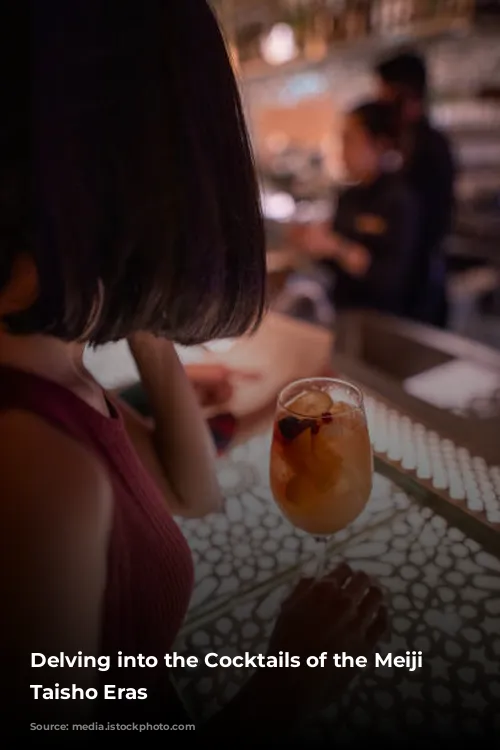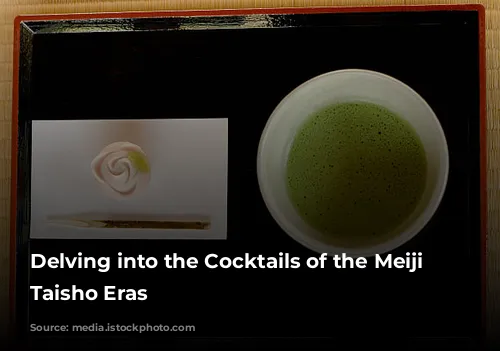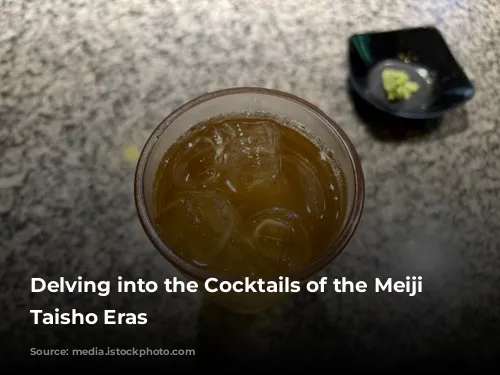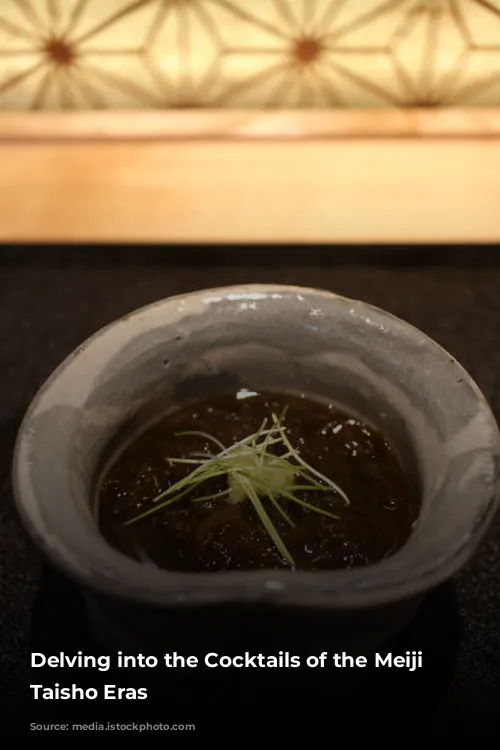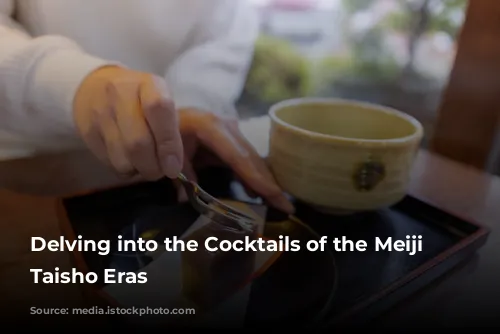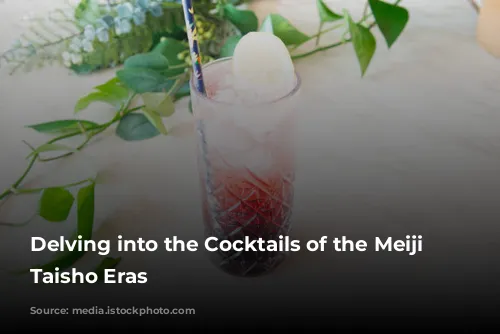After exploring the beers enjoyed during the Meiji and Taisho eras, it’s only natural to investigate the cocktails that graced those times. Cocktails, with their mixology recipes, have a remarkable staying power compared to the fleeting trends of beer styles. They transcend time, carrying the essence of past flavors and customs.
To unravel the cocktail scene of the Taisho era (1912-1926), I embarked on a quest to the iconic Imperial Hotel in Tokyo. It’s logical to assume that the beverages favored by the affluent patrons of its bar mirrored the prevailing trends in other upscale establishments during this era of jazz and democratic spirit.
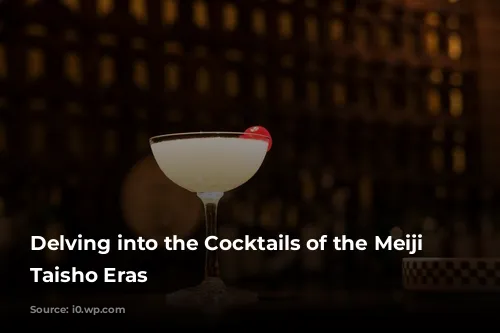
The Imperial Hotel: A Fusion of East and West
The Imperial Hotel, established in 1890 by three noble patrons and supported by the Imperial Family, was instantly recognized as a symbol of refinement, rivaling the finest hotels in Europe. Its international clientele and proximity to the heart of Japanese government made it a place where East met West in a symphony of style. This cultural exchange naturally led to the introduction of Western culinary practices, including the art of cocktail making.
At that time, Japan was striving to abolish the unequal treaties, seeking to demonstrate its equality with European nations. The government-funded Rokumeikan, a lavish hall designed to host foreign dignitaries, played a pivotal role in this diplomatic endeavor. It hosted grand costume balls and extravagant dinners, showcasing Japan’s elegance to the world. However, after a brief existence from 1883 to 1890, it was deemed an expensive failure. The project’s architect, Foreign Minister Inoue Kaouru, resigned in 1887, only to return to government within a year. Ironically, Inoue became a key supporter of a new project that aimed to fulfill the Rokumeikan’s purpose with greater success. This project was none other than the Imperial Hotel, built adjacent to its predecessor.
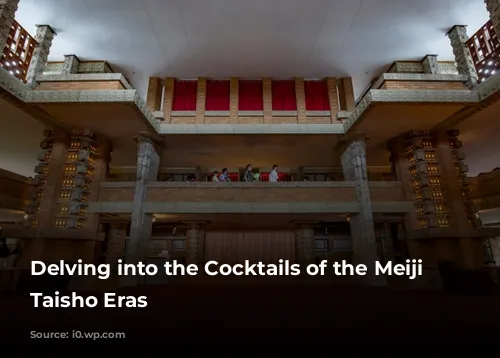
Frank Lloyd Wright’s Vision: The New Imperial
During the Taisho era, the Imperial Hotel underwent a significant transformation. The old structure was replaced with a magnificent new building, a testament to the architectural brilliance of Frank Lloyd Wright. Wright, a renowned American modernist architect and admirer of Japanese art, undertook six projects in Japan, with the Imperial being the most ambitious.
Wright’s Imperial Hotel was designed in the Mayan Revival style, characterized by its unique, almost otherworldly aesthetic. I’ve had the privilege of visiting the old lobby, preserved at Meiji-mura, on several occasions. Its rough oya stone and angular patterns create an atmosphere that feels more like a sacred temple than a hotel. This was the welcoming sight that greeted guests after their trans-Pacific voyage on an NYK steamer.
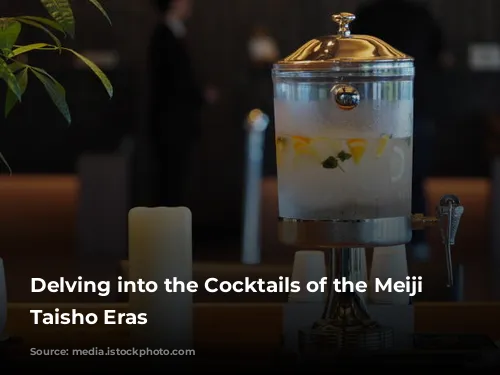
The Mt. Fuji: A Cocktail Fit for an Emperor
In 1924, another iconic element awaited guests at the Imperial: the Mt. Fuji cocktail. Aptly named for its association with the Taisho era, this signature drink was created for passengers on an around-the-world cruise. When expertly crafted, it resembles a snow-capped peak, adorned with a cherry on the rim, evoking the image of the rising sun over Japan’s most famous mountain.
The Mt. Fuji is a harmonious blend of Old Tom gin, maraschino liqueur, pineapple juice, lemon juice, egg white, and fresh cream. It occupies a space between a gin sour and a Ramos gin fizz, with the distinct addition of pineapple juice and maraschino, resulting in a unique flavor profile. The Imperial Hotel has served this drink since its inception, and it remains a beloved offering at the Imperial Bar, which retains the aesthetic of Wright’s design.
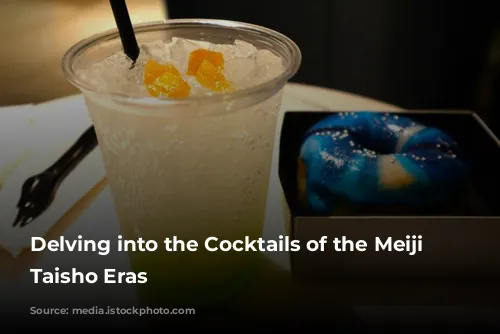
A Glimpse into the Taisho Era Cocktail Menu
To uncover the broader cocktail scene of the Taisho era, the Imperial Hotel graciously provided me with a 1946 menu. Though published twenty years after the era’s end, it offers valuable insights. By removing drinks introduced after 1926, we can glean a glimpse into the cocktails likely served during the Taisho period.
The majority of the cocktails are timeless classics you’d anticipate finding at any reputable bar in a global metropolis. The Manhattan, Side Car, Rob Roy, Gin Fizz, and Old-Fashioned were staples of the era, even in a time when Prohibition was in effect in the United States. (A comprehensive list with dates will be provided at the end of the article for those seeking further details and for those planning a roaring twenties or Great Gatsby-themed soirée.)
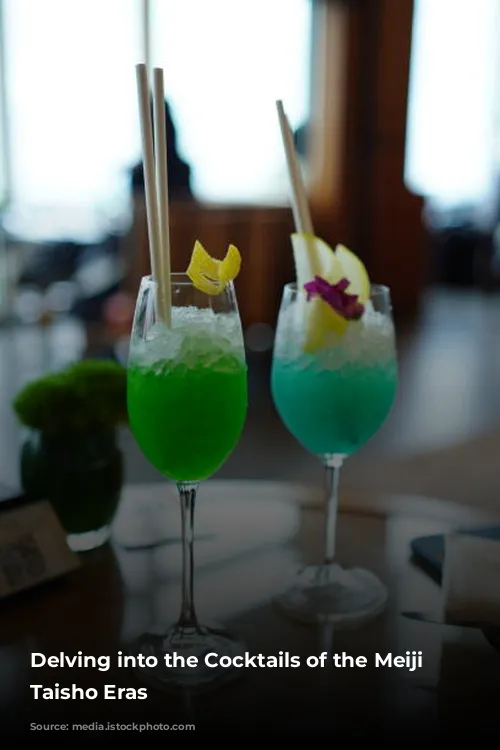
Beyond the Classics: The Bamboo and Million Dollar
Beyond the familiar classics, two cocktails stand out as particularly notable: the Bamboo and the Million Dollar. These cocktails were either created or introduced to Japan by Louis Eppinger, the bar manager at Yokohama’s Grand Hotel. This German barman had honed his skills in San Francisco before being lured to Yokohama in 1889 by American officers, eager to bring his expertise in American cocktail culture to Japan. It’s plausible that the clientele of both hotels, the Imperial and the Grand, shared a certain level of social overlap.
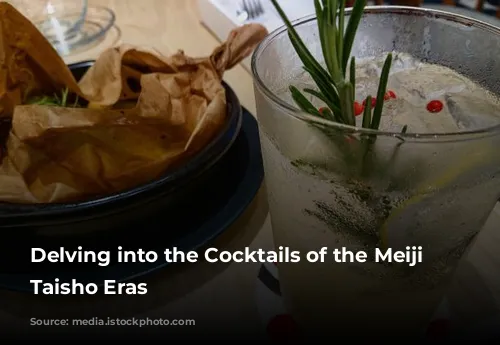
A Taste of Japan: Denki Bran
Based on this information, it’s safe to assume that the cocktails popular in Japan at the turn of the 20th century, during the Meiji era, mirrored global trends. However, one bottled cocktail stands out as uniquely Japanese: Denki Bran.
For our final look at the drinking culture of the Meiji and Taisho eras, we’ll journey to the oldest Western bar in Japan, the birthplace of Denki Bran.

Acknowledgments and Further Exploration
My sincere gratitude to the Imperial Hotel for providing the bar list, Mt. Fuji information, and for answering my questions. For those interested in learning more about the Imperial Hotel or making a reservation, please visit their website: https://www.imperialhotel.co.jp/e/tokyo/
To assist anyone interested in crafting a by-the-decade cocktail list, I’ve included dates whenever possible. These are generally the oldest dates associated with a particular drink that I could find. It’s important to note that the age of some drinks cannot be definitively determined due to multiple drinks sharing the same name, such as the Rose.
For those eager to recreate these vintage cocktails at home, I recommend avoiding the temptation of simply using a modern Mr. Boston guide. Just as with the beers we explored earlier, familiar names might not taste the same as they did in the past. Ordering a Manhattan in 1900 would have yielded a drink consisting of a half-wine glass of whiskey (any type), a half-wine glass of sweet vermouth, orange bitters, and a dash of absinthe, if desired. To truly immerse yourself in the spirit of old-time cocktails, delve into vintage cocktail book websites or even acquire an antique cocktail book from the era you’re interested in. The majority of the drink ages referenced in this article were obtained from diffordsguide.com.
